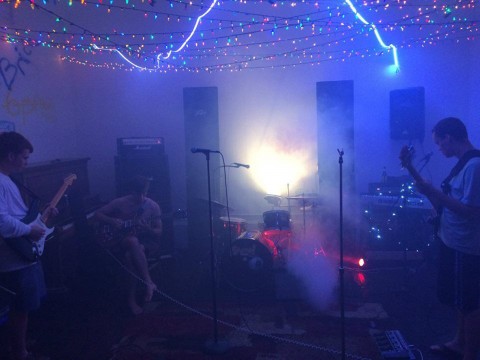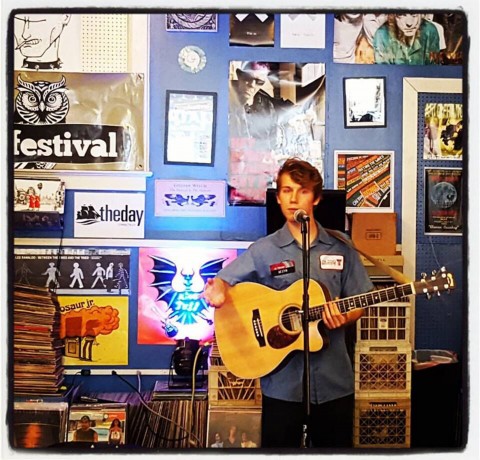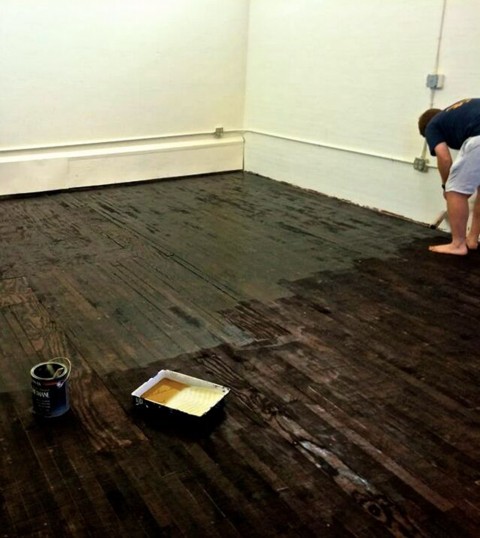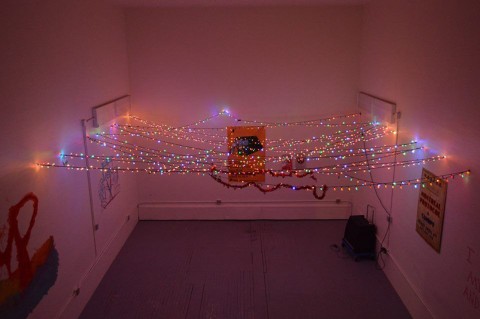- Photo Courtesy of Drew André
- Photo Courtesy of Richard L. Martin
- Photo Courtesy of Drew André
- Photo Courtesy of Drew André
This past summer the Barn – that edgy building behind the student center where you can hear the smash of symbols and the strum of guitars – has undergone drastic refurbishing at the hands of Connecticut College students.
In fact, this year’s Barn is almost unrecognizable from the Barn of the past: its walls are a mural for a whole new wave of student art (of varying seriousness), its sound system has been revamped and its stage is finally, well, a stage.
This summer’s student initiative built upon President Bergeron’s endorsement last year, which saw the Barn’s leaky ceiling repaired and the entire building repainted.
MOBROC hopes that these rapairs will revitalize and engage the student body in the culture of the performance space.
The Barn has been the foundation of a history of cult favorite bands from the College, including bands like Clap Your Hands Say Yeah, Camp and Shake the Baron. Shake the Baron even graduated with a record deal, which eventually fell through.
Camp, meanwhile, was one of three MOBROC-affiliated bands to perform at this weekend’s 7th annual IAM Festival, which has grown to be a major event in the Greater New London area.
The College Voice sat down with Drew André ’16, who took charge of the student-led renovations this summer, to discuss the ongoing project and the future of MOBROC.
TCV: The Barn looks a lot different than it did last semester. What kind of changes did you make this summer, and why?
Drew André: The floors been totally redone, we power washed and hand-sanded it and coated it so the wood won’t get stained. We’ve got a legitimate new audio system. The space is now built to bring bands in which is a huge thing for MOBROC, and hopefully we’re going to get money from SAC this year to do that. We’re trying to build a brand that we can sell to New London and to our community at large. We’ve totally renovated the space, and out of pocket too, as well as getting some donations. Richard Shank from the dance department helped us with equipment, and Bergeron’s help too was an encouragement from the start. Including all the people that helped out this summer, there were a lot of heads in the project.
TCV: When you say sell it to New London, what do you mean?
DA: I mean, come here, put on a show and kids here will listen to you. We’ll sell your CDs; we’ll get people to come. We want to get bands to think about the Barn as a venue, and while maybe the Barn won’t always be the perfect space, [they] can still use it to connect with bands and maybe set them up somewhere else on campus.
TCV: What influence do you think the Barn can have on the campus social scene?
DA: MOBROC can change the social scene on campus. If we had a show every three weeks—which a lot of schools do—MOBROC would be a huge part of our social scene. Take Boston University, for instance, where bands even have a house to live on campus. We want to take MOBROC to that level of legitimacy and enthusiasm in the community.
It is hard with the administration pushing back. In some sense its for good reason, because you can only have 30 people in the Barn according to the fire codes, and it’s also not handicap accessible, which we’re working on. The new events system doesn’t help either, having to schedule things so far in advance.
But I think most importantly, when you are a new band and you’re just beginning to sell yourself and to be good, I think it’s really really hard to do that when there are outside forces who don’t want you to have a big show. It’s a huge deal to set up a gig on campus, you know, there’s so much liability and really, we’re just bands trying to get known.
TCV: And what happens when you throw the gig anyway?
DA: Well, then we get in a lot of trouble.
TCV: The history of the Barn has been off the wall. Do you think any of that will be lost by integrating more into the campus?
DA: It’s an interesting question. There is such a diversity of bands that I don’t think that will happen. MOBROC is for anyone. And when I say MOBROC I don’t just mean the Barn. Student bands on campus are something to do, and we’re underutilized as far as entertainment goes.
TCV: But how does the makeover—literally and more figuratively—fit into the storied legacy of the Barn and the bands that have come before today’s generation?
DA: There is such a legacy, I mean, looking back just ten years at what MOBROC was doing – shows in Abbey House every other weekend—you can still see where they were and the legacy they created, it’s literally written on the walls. This is the social scene at Conn that has the most history, and its sad that its not that way anymore. I can think of so many artists on campus that just didn’t have the space to perform in. Now we do, and the changes we made this summer are a continuation of that legacy.
Part of our problem is that bands graduate and we lose a sense of continuity in the Barn, so we have to think about those cycles, too.
We’re actually in the process of working on a bible for the Barn so we can hand the story of the place down and not have that problem so much. Keeping the story of Barn alive is really what this whole project is about. •












